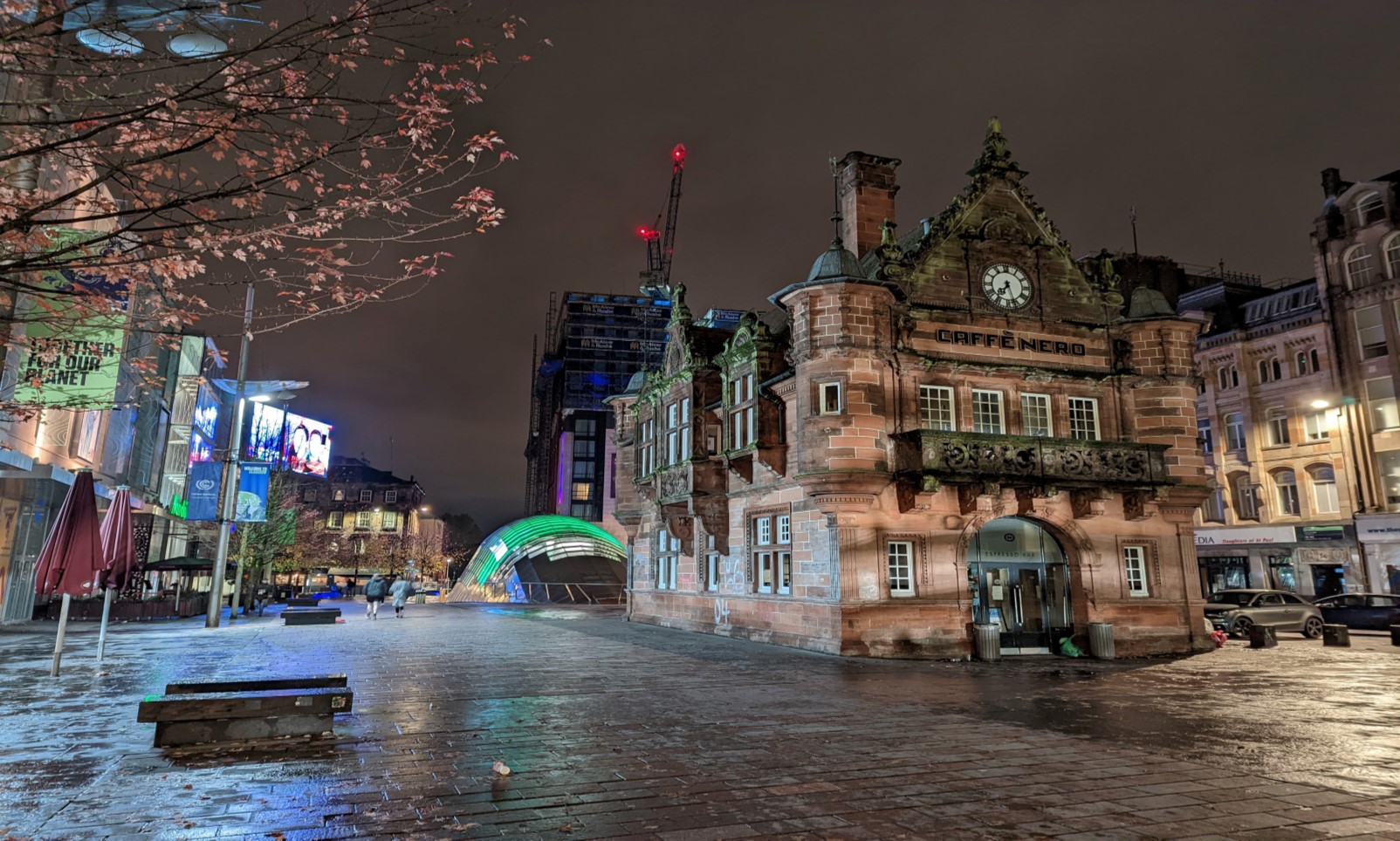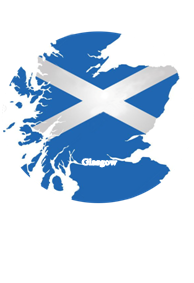Snips – News For Scotland – 3rd May
The news headlines:
- Get on the air to care campaign succeeding
- May RadCom made available to all online
- Repeater and Beacon insurance renewed
GB2RS – Script – HERE .
CLUB NEWS
Please note that the RSGB has relaxed the rules for practical assessments as a prerequisite for amateur radio licence examinations. These assessments have been suspended for the foreseeable future during the COVID-19 crisis. Foundation candidates can now sit their exam entirely on line. At present arrangements for Intermediate and Full examinations are currently under review. For further information go to www.rsgb.org/exam-faq. Latest news on this is that there are over 500 candidates now waiting to sit their exam, so get your entry in now.
For those of our listeners who want to buff up before taking the foundation exam then Billy MacFarlane of the Stirling Club has produced an on-line training programme with 43 lessons and this is available to use free of charge at https://gm6dx.thinkific.com/
Today Stirling and District Radio Society are running a net in place of their regular Sunday Club Meetings they are using the GB3FE repeater located at Stirling from 10am.
Glasgow and Clyde RAYNET group are running a NET today and for the foreseeable future using the MB7IBH gateway at Dumbarton. Access is via EchoLink or on RF on 144.9625 MHz and the net is open to ALL from 8:00pm
Ayr Amateur Radio Group has daily CW nets on 7.035MHz ± QRM at 10.15am, then they QSY to 7.065MHz for a SSB net; then at 10:30 their net is on145.450MHz; then in the evening they hold a net on CW on 144.295MHz at 7.30pm, following that they QSY to FM or SSB. Sundays also see a CW net on 144.295MHz from 7pm and one on 145.450MHz FM at 7.30pm. Contact Derek, MM0OVD, on 07447 931 941.
Dundee ARC has a net on Sundays via GB3AG from 7pm. Contact Martin, 2M0KAU, on 07763 708 933.
Kilmarnock & Loudoun Amateur Radio Club has a net on Sundays from 2pm around 3.720MHz SSB, moving to around 3.540MHz for a CW net after the SSB net ends. Tuesday sees a net on 145.475MHz FM from 7.30pm and on Saturday there’s an online meeting. Contact Len Paget, GM0ONX, via email to klarcinfo@gmail.com.
Mid Lanarkshire Amateur Radio Society has a net on Sundays from 10pm on 28.475MHz. On Wednesday it’s the DMR Scotland chat on TG23550 from 8pm and Friday sees a Zello net on the club channel, moving later to 2m FM. Details are at https://mlars.co.uk.
Glenrothes & District Radio Club has open nets on Monday to Saturday at 10am on 3.790MHz and on Tuesdays and Thursdays on 145.425MHz at 7:20pm. In addition to the VHF nets there will be morse training. Contact Tam on 07753 526 498.
On Monday Edinburgh & District Amateur Radio Club has a net on 433.525MHz FM at 8pm. Contact Norman, GM1CNH, on 07740 946 192.
Paisley Amateur Radio Club are running nets on Monday from 2000 on144.550 and Zello, and on Tuesday at 2000 using DMR 4415 and on Thursday at 2000 on 144.550 and Zello
On Wednesday Lothians Radio Society has a net on 144.350MHz SSB at 8pm. All are welcome to join in. For further information please contact Andy by email to secretary@lothiansradiosociety.com.
On Wednesday Inverness & District Amateur Radio Society has it net from 8pm on 145.575MHz & GB7BI or GB7II slot 1 475, For details, email InvernessRadioSociety@gmail.com.
On Wednesday West of Scotland Amateur Radio Society has a net from 8pm on 433.425MHz. On Friday there’s a net on 145.425MHz also from 8pm. Details are at wosars.club.
On Thursday Wigtownshire Amateur Radio Club has a net from 7pm on GB3DG. See www.gm4riv.org for other details.
Also, on Thursday the Lomond Club will be using MB7IBH on 144.9625MHz in the Dumbarton Area from 7:30 and they will be also connected on EchoLink using the same gateway
Thirdly, on Thursday the Stirling Club has a net on GB3FE from 7pm.
And finally on Friday Strathclyde Park Amateur Radio Club (SPARCS) runs a net from 1930 on 145.400 MHz. contact Bill MM0SFB for information.
…… and if you have any relevant information with regards to Club Nets, please contact Tony – MM0TMZ or radcom@rsgb.org.uk. Also, WoSARS has a compiled table of known Nets which can be accessed on their Homepage at wosars.club …..
EDIT: 03/05/20 – A table of Club Radio Nets – HERE .
Snips – News For Scotland – 5th April
The news headlines:
- G2HCG becomes centenarian this week
- Remember to vote in RSGB elections
- Foundation exams online during pandemic
GB2RS Script – HERE .
CLUB NEWS
On Monday Edinburgh and District Amateur Radio club has a net. Contact Norman, GM1CNH, on 0774 094 6192.
West of Scotland Amateur Radio Society has a net on Wednesday from 8pm on 433.425MHz from 8pm. On Friday there’s a net on 145.375MHz from 8pm—details at wosars.club
Frontier-Women Conquers Summits
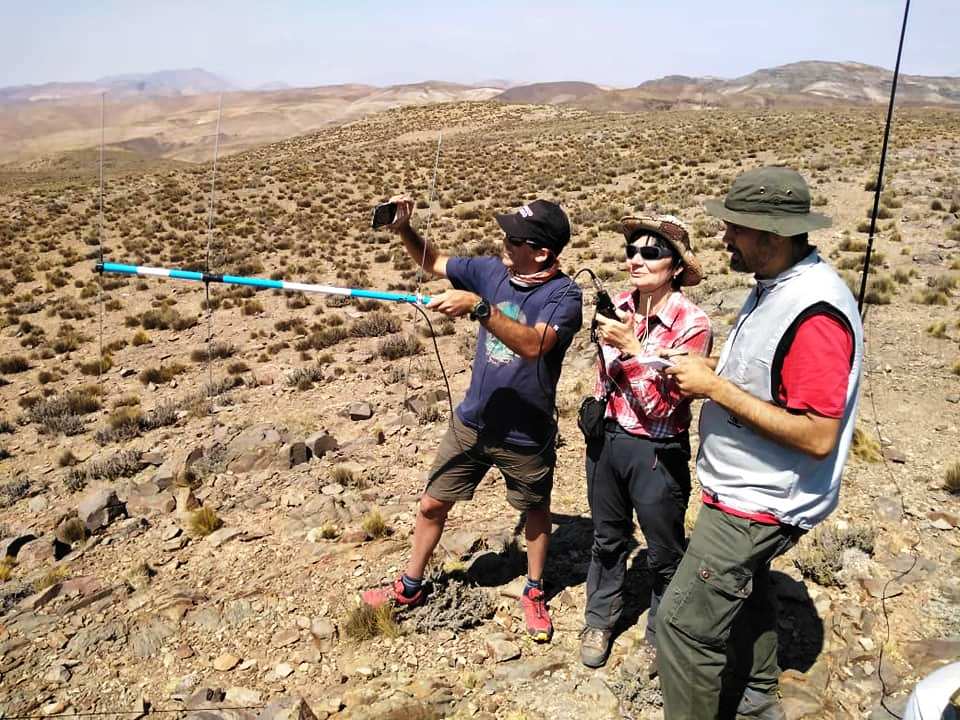
Frontier-women conquers Summits – By Péter Váry O.
Women usually go to the hairdresser, go shopping, and usually do “feminine” things when they have time off. Éva Gajdó, a teacher of computer science at Tivadar Puskás Vocational High School, who teaches programming on CNC (computer-controlled) machines, does not like this. She climbs mountains. And up there on the summit, she transmits radio signals. It may seem a strange combination at first, but it is recognised as a sport. Established for less than a decade and a half, it is already gaining in popularity and Éva Gajdó has accomplished something very big in this sport in a short time. Her success is the envy of her fellow men, which as she is a Szekler, does not often happen. (The Székelys derive their name from a Hungarian expression meaning “frontier guards”.)
Éva Gajdó has been roaming the mountains since she was a child. She became a true lover of climbing when one of her teachers took her on an expedition. Then life sank into the ordinary course of events: she got married, the children came and there was little opportunity to conquer the peaks.
Several years ago however, talking about childhood dreams with a group of friends, Eve recalled that when she was sixteen, she was determined to climb Mont Blanc. But it seemed it would remain just a dream. Then, a few days later, a friend told her that the Szeklers were hiring amateur climbers and heading to Mont Blanc.”I didn’t think, I called Tulit Sombor, and applied,” says Eve.
Two months of tough training was unsurpringingly not enough to qualify for the team. She also found her gear was unsuitable. She hiked in velvet pants and her ancient boots caused problems; the two months were agonizing. But Sombor reassured her that she had all the skills and with a little training, could climb Mont Blanc. It became a passion and she has not missed a weekend in five years and even celebrated New Year’s Eve on top of a mountain.
She applied for another expedition, but unfortunately before her departure she sprained an ankle. She was able to climb this year, but couldn’t use the radio.
In order to understand why Eve should have been broadcasting radio signals from the highest peak in the Alps and what activation means we need to introduce the sport called SOTA. The acronym comes from ‘Summits on the Air’, this radio competition was launched in 2002 by radio amateurs who combined there passion with mountaineering.
The competition (Edit: SOTA is not a contest it is based on your own self fulfilment) consists of climbing the designated peaks – at least 150 meters above its surroundings – by hiking, and from the ‘summit’ the hiker must establish at least four radio links with other radio amateurs around the world (meaning activation).
The peaks score between 1 and 10 according to their height and can be activated once per year.
The map provided by NASA to radio-operators in Romania has about two hundred SOTA peaks, of which 250-300 can be climbed under normal conditions, ie on a more or less well-marked path.
A walkie-talkie can achieve the necessary score if it is successfully activated, that is, it has been climbed and a minimum of four mandatory contacts made. After earning a thousand points, the title ‘Mountain Goat’ and trophy will be awarded to the competitor. Achieving a thousand points usually takes several years to complete. Eva did a special job here too.
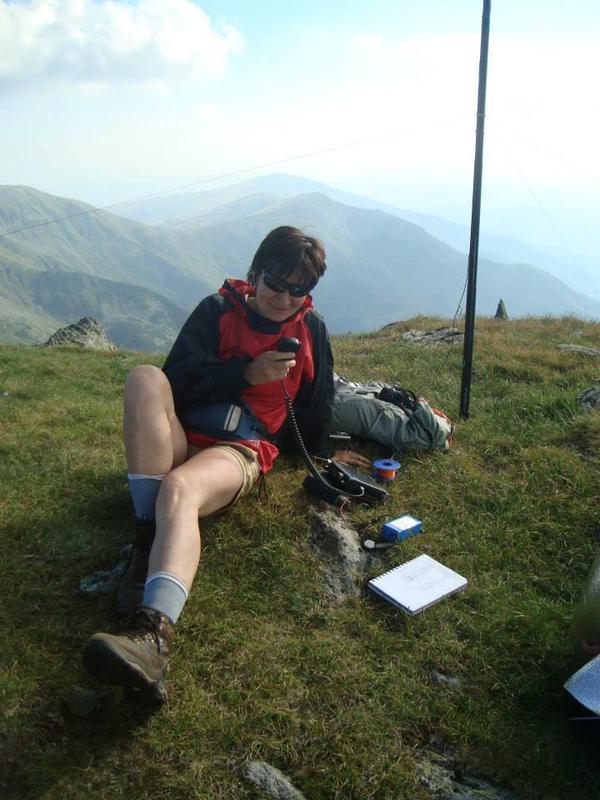
Eve met a man in Jezer (Bosnia and Herzegovina) on a hike, while trying to establish a radio connection at the summit. He was interested in the subject, because there is a radio club at Puskás Tivadar Vocational School, Budapest, and he was wondering how to create something new and interesting for the students. At that time, he had no plans to start radioing himself, or that hiking would become a competitive climb. He asked a teacher at Transilvania University in Brasov, Csaba-Zoltán Kertész, if he would come and introduce SOTA to the children.
Since January last year, Csaba has gone to St. George every Tuesday, trying to infect students with the radio virus. Because amateur-radio amateur is well-suited to the younger generation, SOTA is becoming more and more popular, including foxhunting, but knowing the basics of radio is essential.
Eve had no childhood dream of becoming a radio amateur but her dedication to teaching led her there. Csaba Kertész enthusiastic for the Tuesday afternoon classes included taking the students on several trips, where they could experience “live” what walking radio was about.
Eva thought that if Csaba couldn’t come for some reason, it would be a good idea if someone could take care of the children. But to do that she needed a radio license.
– You have to take a very tough exam: electronics, knowledge of frequencies, first aid. You have to learn the phonetic alphabet that is used in radio, to know what phrases can be heard and what are not, so there are ethical rules as well.
She passed and received her radio callsign: YO6EVA. (YO = Romania ID, 6 represents the area, and EVA unique, individual)
I’ll do it in a year – As I had passed my exam, I went with Csaba to a SOTA marathon. It was staged in the Bihari Mountains, Romania, and was worth exactly one thousand (1000) points for someone who had done it for six or seven years. I told Csaba, as I go to the mountains, I could earn a thousand points in a year.
In the beginning it was really hard because I didn’t know anything about radio, I didn’t have any equipment, I borrowed a walkie-talkie, which had only 300 meters range I went up the mountain and couldn’t activate it. I persuaded Csaba to come with me to collect points, but the points accumulated very slowly. Finally, I bought a serious radio, and then the “party” started.
– Has a thousand points been reached in one year?
– Not easily, but it was. I went to Nagykő (Transylvania, Romania) alone and for the first time spoke on the radio and I was so scared I switched it off.
There was bad weather at Nagyhagymás, I went up four times, but never activated it; in minus ten (-10) degrees activating radio was not a lot of fun.
Disappointed I told Csaba it wouldn’t work for me, but with the support of friends, somehow I hung on and continued. The biggest challenge was to get to the summits that I would not have gone to otherwise, I had to cut through a sign or path like in the jungle. Finally a thousand points were reached, 131 different peaks in a year.
– 131 peaks in a year, one average every three days.
– Most were the four eight-point peaks in a single day, 40 kilometers of walking at 3500 meters.
What’s next?
With her unique performance, Eve has earned the envy of many of the male walkie-talkie operators, She reached a thousand points in May – since then, the number of activations in Romania has increased, with another SOTA marathon being organized by December 1, interest in the sport has revived..
Although Eve has achieved what she set herself to do, she does not intend to stop walking but not as intense as before. Also because all of the closest peaks have been activated and new ones are usually a two-day hike away – She would like to climb the highest peaks in Europe, but she would need to take another license before she could broadcast abroad.
Eve talks enthusiastically about everything, but when it comes to the mountains, her eyes shine the most. What does mountain climbing, mean to her?
Its an obsession with me, an addiction. The mountain has given me so much, I try to pass that on to the students. Everything revolves around the mountain, I don’t go to the beautician or to the shops, and my daughter says you have seven pairs of hiking pants, but you just don’t have anything to go to school. SOTA has exposed a whole new side of climbing and fox hunting.
Author: Péter Váry O. Publication date: 2018-12-29
Háromszék (Romanian publication in Hungarian) Saturday, December 29, 2018, Report
Szekler at the summit https://www.3szek.ro/load/cikk/119391/szekely-a-csucson
Further:
1st YL Mountain Goat in Romania.
YO6EVA Eva Kelemen Gajdo reached a thousand points in May 2018 becoming the first YL Mountain Goat in Romania. An admirable achievement, showing great dedication and a nice example to follow. What is truly amazing, that she achieved this goal in just under a year after obtaining her HAM license, learning all about what it takes to operate a radio while hiking around the summits of Romania, whatever the conditions or difficulties. Hail, the rain, bad propagation could not deter her in achieving her target.
https://reflector.sota.org.uk/t/eva-yo6eva-newest-mountain-goat-in-romania/17546
Further:
Romanian yl Éva YO6EVA active on Argentina Mountain
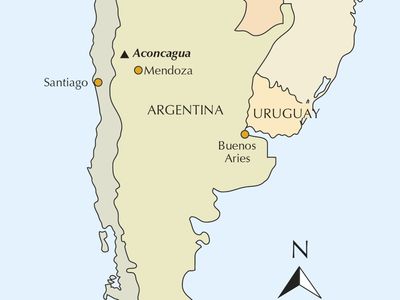
yl from Romania – YO6EVA Éva Gajdo and Csaba YO6PIB with colleagues from SOTA Mendoza, Argentina, activated SOTA (LUM/PC-004) Jan. 2020.
Éva Gajdó YO6EVA and Csaba-Zoltán Kertész YO6PIB came to climb and activate Aconcagua during the first two weeks of January 2020. Aconcagua (LUM/PH-001) is the highest summit in the SOTA programme, altitude. 6960m.
However they could not reach the summit due to very high winds. They began their descent as per schedule feeling very disappointed, especially regarding the Mendoza radioclub friends who had supported the expedition, prepared to ‘chase’ (on air) and even to make ‘summit-to-summit’ contacts. They made 2 attempts and spent 3 nights at over 6000m.
On their arrival back in Mendoza, Eva and Csabone had one day left before catching their plane home to Romania. Tthe Argentina SOTA group was also disappointed and it was decided to activate another summit where they could communicate in VHF and HF as originally planned.
The route was chosen so that Eva and Csaba could enjoy seeing animals from the local Villavicencio reserve, mostly guanacos. The group was also lucky enough to see several condors flying over the activated peak in the Paramillos area.
The group were surprised by the number of active stations that made contact. Many operators were keen to communicate their enthusiasm at contacting the visitors and to wish them a safe journey back to Romania. Unfortunately propagation conditions for HF were not good, although some contacts were achieved.
The Argentinians were happy that Eva and Csaba had managed to activate an Argentine summit and although it was not Aconcagua, that they had enjoyed the local hospitality of Mendoza.
LUM/PC-004, Paramillos 3356m This peak is not well known and does not have a name, near Termas Villavicencio, Mendoza (Argentina). Value 8 SOTA points,
YouTube by LU1MAW Alejandro Ciro Weber https://youtu.be/mxC0kf5kIGk
See Éva Gajdó Facebook: Album Acongaua 6700 méteren
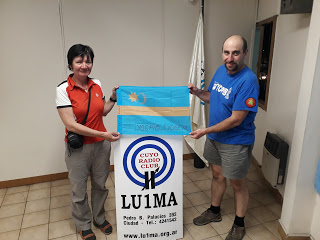
Aconcagua [32°39’12.35″S – 70° 0’40.00″W]
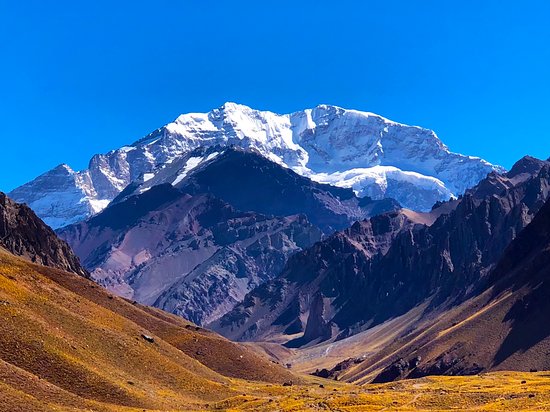
Aconcagua is a mountain in the Principal Cordillera of the Andes mountain range, in Mendoza Province,. east of Argentina’s border with Chile. Aconcagua is the highest mountain outside Asia, at 6,961 meters (22,838 feet)
The mountain and its surroundings are part of the Aconcagua Provincial Park. Aconcagua Provincial Park is 185 km away from the city of Mendoza, near the border with Chile.
The mountain has a number of glaciers. Aconcagua is arguably the highest non-technical mountain in the world, since the northern route does not absolutely require ropes, axes, and pins. around 3,500 climbers tackle Aconcagua each year with a success rate of about 60%. Aconcagua has one of the highest death tolls of the world’s highest peaks.
There are severe winds and low temperatures, but it’s Aconcagua’s altitude that presents the greatest problem. Every year sees several deaths on Aconcagua – mainly people who underestimated the task and help may take several hours to arrive. Climbing the mountain will require on average of around 21 days.
The official visiting season is from November 15 to March 15. During the summer, the temperature at night above 5,000 meters (16,400 feet) is about -20°C (-4°F), and the usual temperature at the summit is -30°C (-22°F). In the rain shadow of the Andean crest, the park is one of the most barren parts of the Andes, with only a discontinuous cover of prostrate shrubs and grasses. At the highest altitudes, it is almost pure scree and snow.
Snips – News For Scotland – 29th March
The news headlines:
- RSGB responds to Covid-19
- Farewell GMT, hello BST
- Contest updates
GB2RS Script – HERE .
CLUBS
As the Government advice is to refrain from social gatherings, we have only included the details of regular nets as well as those newly created in place of club meetings
Kilmarnock and Loudoun ARC have a daily get-together every morning for all Ayrshire amateurs on 145.450MHz and that channel is monitored all day. One of the club’s younger members has also offered to run errands for older members. Contact Len Paget, GM0ONX, Klarcinfo@gmail.com.
On Monday Edinburgh and District Amateur Radio club has a net. Contact Norman, GM1CNH, on 0774 094 6192.
On Wednesday Inverness and District Amateur Radio Society has its net from 8pm on 145.575MHz and GB7BI or GB7II slot 1 475. Contact Adrian, MM0DHY, via email to InvernessRadioSociety@gmail.com.
On Friday West of Scotland Amateur Radio Society has a net on 145.375MHz from 8pm. Details are at wosars.club.
Snips – News For Scotland – 8th March
The news headlines:
- RAYNET helps in flooding emergency
- Blue Ham this weekend
- 6,873 February visitors to NRC
GB2RS News Script – HERE .
CLUB NEWS
Cockenzie and Port Seton Amateur Radio Club has an on-air activity day this Sunday. More information from Bob, GM4UYZ, on 01875 811 723.
Stirling and District Amateur Radio Society club has a meeting from 10am to 2pm this Sunday and next Sunday, and Thursday sees a club night—for details, email secretary@gm6nx.com.
Edinburgh and District Amateur Radio Club has its net on Monday. Contact Norman, GM1CNH, on 0774 094 6192.
On Tuesday Glenrothes and DRC has a planning meeting and bunker update. Contact Tam, on 0775 352 6498.
On Tuesday Kilmarnock and Loudoun Amateur Radio Club is having a club night. Contact Len Paget, GM0ONX, via email to klarcinfo@gmail.com.
On Tuesday Livingston and District Amateur Radio Society has a talk The Nano VNA. Details from Cathie, 2M0DIB, on 01506 433 846.
On Wednesday Inverness and District Amateur Radio Society is having a Morse class and club night—for details, email InvernessRadioSociety@gmail.com.
On Wednesday Lothians Radio Society is having a talk by Geoff Crowley, MM5AHO How NOT to Sail to the Faeroes. For details, email secretary@lothiansradiosociety.com.
West of Scotland Amateur Radio Society has its usual Solder Group meeting on Wednesday but there’s a change to the Friday night programme. The talk Trans-Siberian Railway Communications by Barry, GM0KZX has been brought forward from the 20th to the 13th—details at wosars.club.
On Thursday Aberdeen Amateur Radio Society has a video evening watching Castles in the Sky. Contact Fred Gordon, GM3ALZ, on 01975 651 365.
On Thursday Lomond Radio Club has a club night. Email Barrie, GM4HEL, via gm0kzx@googlemail.com.
On Thursday Wigtownshire Amateur Radio Club is doing practical work—for details, email info@GM4RIV.org.
On Friday Mid-Lanarkshire Amateur Radio Society is having a club night, tuition and radio operations—details are at mlars.co.uk.
From China To The Netherlands With 8Watts And An Umbrella
7th March 2019
Between Zhao – BG0AUB and Remco – PA3FYM had the second QSO through OSCAR – 100 using an Umbrella antenna at Zhao’s end.

Zhao’s uplink (2.4GHz) was 8W with Osar 100’s downlink (10GHz) signal of about 25dB above the receiver noise floor.
Snips – News For Scotland – 23rd February
The news headlines:
- New distance record on the 122GHz band
- Repeater, Gateway and Beacon NoV renewals
- Ofcom consults on EMF exposure
GB2RS Script – HERE .
CLUB NEWS
Stirling & District Amateur Radio Society club has a meeting from 10am to 2pm today and next Sunday including CW lessons. Thursday sees a club night. For details, email Jess, MM3RCR at secretary@gm6nx.com
On Monday Edinburgh & District Amateur Radio Club has a club net operating evening. Contact Norman, GM1CNH, on 0774 094 6192
On Tuesday Glenrothes & District Radio Club discuss the programme for June, July, August and September. Details from Tam, on 0775 352 6498
On Tuesday Kilmarnock & Loudoun Amateur Radio Club is having a club night. Contact Len, GM0ONX, via email to klarcinfo@gmail.com
On Tuesday Livingston and District Amateur Radio Society is having an operating and training evening. Details from Cathie, 2M0DIB, on 01506 433 846
The RSGB Convention video The Raspberry Pi Explained for Radio Amateurs by Mike Richards’ G4WNC will be shown at the next meeting of Lothians Radio Society on Wednesday at 7.30 for 8pm at Braid Hills Hotel. Visitors are welcome. More from Andy, MM0FMF, by email to secretary@lothiansradiosociety.com
On Wednesday West of Scotland Amateur Radio Society has a Solder Group meeting and a club night on Friday. Details from Jack, GM4COX, at wosars.club
On Thursday Aberdeen Amateur Radio Society is holding a construction & on the air night. Contact Fred, GM3ALZ, on 01975 651 365.
On Thursday Lomond Radio Club is having a club night. More from Barrie, GM4HEL, by email to gm0kzx@googlemail.com
On Thursday Wigtownshire Amateur Radio Club is having a club night. Details from Clive, GM4FZH, by email to info@GM4RIV.org
On Friday Mid Lanarkshire Amateur Radio Society is having a club night, tuition and radio operations. Details at https://mlars.co.uk/
Snips – News For Scotland – 26th January
The news headlines:
- RSGB Board application deadline looms
- British Science Week info available now
- Why GB3GV is QRP
We start with a reminder that all UK amateurs are required to re- validate their licence with Ofcom at least every five years. If it has been a while since you did that, go to ofcom.org.uk/manage-your-licence or email spectrum.licensing@ofcom.org.uk. The process doesn’t take very long.
GB2RS Script – HERE .
CLUB NEWS:
Stirling and District Amateur Radio Society club has a meeting from 10am to 2pm this Sunday and next Sunday. Thursday sees a club night. For details, email secretary@gm6nx.com.
On Monday Edinburgh and District Amateur Radio Club has its net. Contact Norman, GM1CNH, on 0774 094 6192.
On Tuesday Dundee Amateur Radio Club is having a club night with training. Contact Martin, 2M0KAU, on 0776 370 8933.
On Tuesday Glenrothes and District Radio Club is having a talk on planetary radar. Contact Tam, on 0775 352 6498.
On Tuesday Kilmarnock and Loudoun Amateur Radio Club is holding its AGM. Contact Len Paget, GM0ONX, via email to klarcinfo@gmail.com.
On Tuesday Livingston and District Amateur Radio Society is having a training evening. Details from Cathie, 2M0DIB, on 01506 433 846.
West of Scotland Amateur Radio Society has a Solder Group meeting on Wednesday. Friday sees a club night discussing the winter programme. Details at wosars.club.
On Thursday Aberdeen Amateur Radio Society is having a construction and on the air night. Contact Fred Gordon, GM3ALZ, on 01975 651 365.
On Thursday Lomond Radio Club is having a club night. Details from Barrie, GM4HEL, via email to gm0kzx@googlemail.com.
Wigtownshire Amateur Radio Club is having a club night on Thursday. For details, email info@GM4RIV.org.
On Friday Ayr Amateur Radio Group has a club night on Friday. Contact Derek, MM0OVD, on 0744 793 1941.
On Friday Mid-Lanarkshire Amateur Radio Society is having a club night, tuition and radio operations. Details are at mlars.co.uk.
Contests For The Listener (SWL)
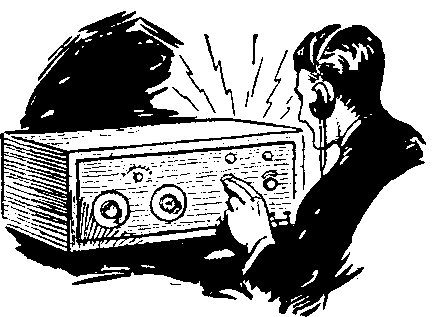
Contests for the listening amateur – by PA3DTX
The NL (Netherlands) committee (NLC) of the VERON organizes a number of contests for listening amateurs throughout the year. These are accessible to every radio enthusiast. They are, of course, primarily intended for the active listening amateur, but radio amateur broadcasters may also simply participate, for example if circumstances do not allow them to transmit. You also do not necessarily have to be a member of the VERON to be allowed to participate. For example, it has been apparent for years that more than half of the participants come from abroad. But we would like to see a large Dutch participation.
Our listening contests have different levels of difficulty, although none is really difficult.
The “New Year Contest” is on the first Sunday of the year. In addition to beginners, more experienced contesters participate every year. The contest costs you a maximum of three hours and you can only make connections in speech. A trophy is available for the winner and every participant who has logged at least ten connections will receive a certificate of participation.
Then there is the series “Short Listening Period” contests (SLP).
These are held 8 times a year and are planned in such a way that they coincide with large contests for radio amateurs, so that sufficient pressure on the amateur bands is guaranteed. It is the intention that during an SLP weekend you log three hours of radio amateur connections that you choose yourself in speech. Choosing the most favorable hours makes the contest more suitable for the experienced contester. But also beginners are encouraged to participate, as they learn by doing. There are also prizes attached to the SLP and anyone who participated in at least 3 SLPs in one year will receive the SLP certificate.
In the second full weekend of December, the NLC organizes a 48-hour contest on the 10-meter band, the “28MHz SWL Contest”. This coincides with a large international contest on the 10 meter band. In this contest we have two participation categories: speech (SSB, FM) and morse (CW).
Prizes and certificates are also made available for this.
The complete information, such as regulations, results and information about a special logging program for listening contests can be found https://a03.veron.nl/contesten-voor-de-luisteramateur/?fbclid
Source: VERON.nl. (Association for Experimental Radio Research in the Netherlands)
